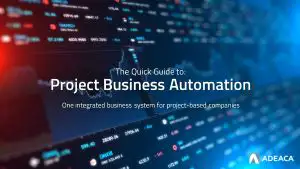Like most companies looking to move their on-premise enterprise resource planning (ERP) systems to the cloud, you’re probably worried about how to mitigate the risks associated with cloud ERP implementations.
In fact, most of the clients that Panorama Consulting Solutions works with are afraid that their ERP implementations may go horribly wrong and ultimately fail, says Eric Kimberling, managing partner of the independent ERP consultancy.
“Some are afraid of blowing their budgets and scheduled timeframes,” Kimberling says. “Some fear that the project will shut down operations at go-live. Others are afraid of losing their jobs. And still others fear all of the above and then some.”
Here are four steps that you can take to mitigate risk and increase the chances that your cloud ERP deployment will be successful.
- Approach it as a business transformation initiative not a technology project – If you treat your ERP implementation as a technology project, you’ll probably cut corners in areas that are key to success, e.g., business process reengineering and organizational change management, according to Kimberling.However, business transformation projects are successful because they focus on the right things, i.e., not the software. “The complex nature of ERP systems makes it easy to dwell on the technical aspects of the project, so don’t fall into that trap,” Kimberling says.
- Check out the financial health of your vendor – It can be extremely disruptive to your company if your vendor suddenly shuts down. So before signing on the dotted line, check out the provider’s financial standing, customer references, client base, media coverage, blog posts as well as the biographies of management. This will give you a sense of the vendor’s longevity. You should also put a plan in place to ensure your business will survive if your vendor goes out of business.On the other hand, if you determine that your provider is experiencing rapid growth, evaluate the vendor’s roadmap, financial health, takeover/acquisition/sale strategy to be sure it has the human resources to meet the needs of all its clients, according to Accenture.
- Non-compliance risks – If you select the right vendor, you can minimize the risks of vendor non-compliance, which can put your business at risk, according to an article in CIO. Your vendor must provide a qualified IT infrastructure and an update and maintenance plan to help ensure that the technologies meet regulatory and compliance requirements. For instance, organizations whose data cannot be hosted in a multitenancy situation must find a vendor that offers a dedicated server.Generally, vendor compliance with appropriate certifications, including SSAE 16 (auditing standard for service organizations), ISO 27001 (information security management standard) and HIPAA (safeguards medical data), minimizes these risks.
- Data security – Like many companies, you’re likely worried about the security of your data in a cloud-based system. However, major cloud ERP providers are aware of this concern and have deployed the strongest security systems available. As such, the security of their servers and infrastructures are more robust than the security processes and systems you could afford if you deployed your ERP on-premise. Still, to ease your concerns, ask your service provider for encryption level and authentication protocol details as well as information about its overall data center procedures.










